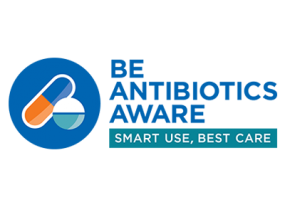|
In the 1920s, Alexander Fleming’s discovery of penicillin kickstarted a whole new era of medicine. The impact was such that penicillin was used to treat pneumonia in soldiers on the battlefields during World War 2. And yet a century later in 2020, over 12,000 people die in the UK due to antibiotic resistance with the number increasing to over 700,000 worldwide. So how did antibiotics go from a “miracle drug” that could cure illnesses previously feared by physicians, to a source of concern for doctors worldwide? After the discovery of penicillin in 1928, infections which previously resulted in loss of life were now being adequately treated by antimicrobials. Antimicrobials include antibiotics, antivirals and antifungals. They are vital in preventing and treating infections. An infection arises when a pathogen enters your body and begins to multiply, with a pathogen being a microorganism (such as bacteria) that causes disease. Antimicrobial resistance occurs when microorganisms no longer respond to the antimicrobials designed to kill them. When antimicrobials lose efficacy as a result of antimicrobial resistance, people can succumb to any number of infections. It has become increasingly apparent that antimicrobial resistance poses a real threat to mankind. In fact, antimicrobial resistance has recently been reported by the World Health Organization (WHO) as one of their top 10 threats to global health. Antibiotics are an example of antimicrobials which are used very widely. They have applications in hospitals, community, food production and in veterinary production. The problem is that the more often antibiotics are taken, the less effective they are. This is because bacteria replicate very quickly- for example, E. coli undergoes mitosis every 20 minutes. During this process, mutations can occur. In general, the change is inconsequential but sometimes, the mutation can benefit the bacteria and give it characteristics that prevent it from being affected by an antibiotic. This trait is then favored via natural selection and the mutated strain quickly outnumbers the original strain. This means that when more people use antibiotics, different species of bacteria have a greater chance at developing these resistant traits. When doctors and GPs inappropriately prescribe patients with antibiotics for conditions like sore throat and sinusitis, it puts patients who genuinely need antibiotics at greater risk of harm. A study found that in general around 1 in 5 antibiotic prescriptions are issued inappropriately in the UK and considering how around 18 in 1000 inhabitants are prescribed antibiotics annually, one can imagine how great the number of people misusing antibiotics is. Antimicrobial resistance requires urgent attention. If action is not taken to combat this phenomenon, many modern medicines could become obsolete. Overcoming antibiotic resistance has been a priority for WHO since 2015. World Antimicrobial Awareness Week is an organized effort by WHO to increase awareness of antimicrobial resistance globally and to encourage practices among the general public, health workers and policy makers, which will prevent further emergence and spread of antimicrobial resistance. Antibiotic Guardian is another initiative that is being undertaken to slow the spread of antimicrobial resistance, specifically that of antibiotic resistance. It is a campaign that was launched by Public Health England in 2014 and aims to encourage health and social care professionals, students, educators in the human and animal health sector as well as members of the public to take action against the spread of antibiotic resistance. By pledging to become an Antibiotic Guardian, you choose to perform a simple action which protects antibiotics against the threat of antibiotic resistance. We can all do our part to stop antimicrobial resistance from spiraling out of control. Prescribers, such as doctors, should ensure that they are appropriately prescribing antibiotics and other antimicrobials, whilst patients should ensure that they take these medicines correctly and finish the full course of treatment. Good hygiene and infection control practices, particularly in healthcare settings, can also prevent infection and reduce the need for antibiotics in the first place. Immunization such as vaccinations are also very useful in preventing infections, further reducing the need for antimicrobials. These measures could reduce the use of antimicrobials and in turn, their misuse, such that we can avoid a future where people succumb to infections as they would have prior to the 1900s. Authors: Amelia Ryan and Nusayba Ali References:
0 Comments
Leave a Reply. |
�
Categories
All
Archives
October 2022
|


